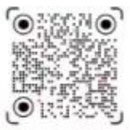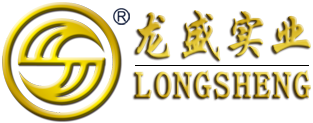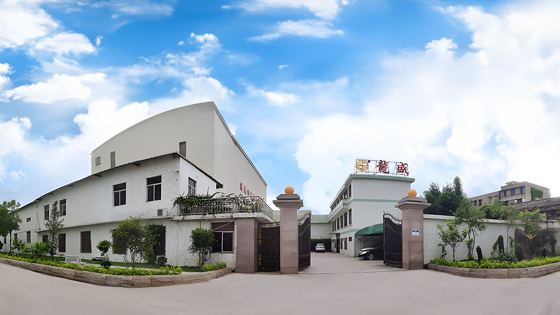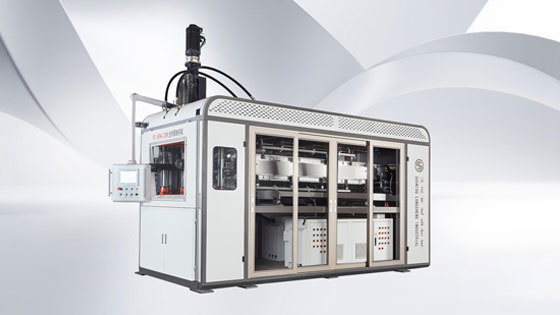Maximizing Efficiency with Advanced PVC Thermoforming Machines: A Comprehensive Guide
Time: 2025-04-26 11:00:56.192
Maximizing Efficiency with Advanced PVC Thermoforming Machines In an era where efficiency is paramount for success in manufacturing, advanced PVC thermoforming machines stand out as essential tools for optimizing production processes. The rise of these machines is transforming how manufacturers approach the production of plastic products, particularly those made from polyvinyl chloride (PVC). This
Maximizing Efficiency with Advanced PVC Thermoforming Machines
In an era where efficiency is paramount for success in manufacturing, advanced PVC thermoforming machines stand out as essential tools for optimizing production processes. The rise of these machines is transforming how manufacturers approach the production of plastic products, particularly those made from polyvinyl chloride (PVC). This guide delves into the intricacies of PVC thermoforming, elucidating how businesses can leverage these technologies to maximize efficiency and profitability.
Table of Contents
- Understanding PVC Thermoforming
- The Importance of Efficiency in Manufacturing
- Benefits of Advanced PVC Thermoforming Machines
- Key Features of Modern Thermoforming Machines
- Choosing the Right PVC Thermoforming Machine
- Best Practices for Using Thermoforming Machines
- Case Studies and Success Stories
- The Future of PVC Thermoforming
- FAQs
- Conclusion
Understanding PVC Thermoforming
PVC thermoforming involves heating a sheet of polyvinyl chloride (PVC) until it becomes pliable, then forming it over a mold to create various shapes and products. This process is widely used in the production of packaging materials, automotive parts, and consumer goods. Understanding the nuances of PVC thermoforming is crucial for manufacturers aiming to enhance their production capabilities.
How PVC Thermoforming Works
The process begins with a PVC sheet being placed in a heating chamber where it is heated to a specific temperature. Once the material reaches its softening point, it is transferred to a mold where vacuum pressure is applied to conform the sheet to the mold's shape. After cooling, the formed parts are ejected, and the cycle repeats. This process allows for high precision and efficiency in producing various products.
The Importance of Efficiency in Manufacturing
Efficiency in manufacturing not only relates to the speed of production but also encompasses cost reduction, quality control, and resource management. In today's competitive landscape, manufacturers must adopt technologies that streamline processes while maintaining high standards of quality. Advanced PVC thermoforming machines provide a solution by enabling faster production cycles, reducing waste, and improving overall productivity.
Impact of Efficiency on Profitability
Improved efficiency directly correlates with increased profitability. By minimizing production costs and maximizing output, manufacturers can offer competitive pricing while enhancing their profit margins. The integration of advanced machinery, such as PVC thermoforming machines, plays a pivotal role in achieving these efficiency gains.
Benefits of Advanced PVC Thermoforming Machines
Investing in advanced PVC thermoforming machines yields numerous benefits that transform production capabilities. Let's explore some of the primary advantages.
1. Enhanced Production Speed
Modern PVC thermoforming machines are designed for high-speed operation, significantly reducing production cycle times. This acceleration enables manufacturers to fulfill orders more quickly, enhancing customer satisfaction and retention.
2. Increased Precision and Quality
Advanced machines offer superior precision, ensuring that products meet exact specifications. This level of accuracy minimizes defects, thereby reducing waste and the costs associated with re-work and scrap.
3. Versatility in Production
These machines can handle a variety of molds and designs, allowing manufacturers to produce diverse product lines without significant downtime for reconfiguration. This versatility is particularly beneficial in industries that require rapid adaptation to market trends.
4. Lower Energy Consumption
Many advanced PVC thermoforming machines are designed with energy efficiency in mind. They utilize advanced heating technologies that consume less energy, leading to lower operational costs and a reduced environmental footprint.
5. Automation Capabilities
Automation features in modern machines facilitate seamless operation, reducing the reliance on manual labor. This not only enhances efficiency but also minimizes human error, contributing to consistent product quality.
Key Features of Modern Thermoforming Machines
When selecting a PVC thermoforming machine, understanding its features is essential to maximizing its potential in your production line. Key features include:
1. Advanced Control Systems
Modern machines are equipped with sophisticated control systems that allow for real-time monitoring and adjustments. This capability ensures optimal operating conditions and enhances overall productivity.
2. Multi-Zone Heating Elements
Machines with multi-zone heating offer precise temperature control across the sheet, ensuring uniform heating. This feature is crucial for achieving consistent quality in formed products.
3. Quick Changeover Mechanisms
Quick changeover mechanisms facilitate rapid transitions between different molds and production runs, minimizing downtime and enhancing flexibility in production schedules.
4. User-Friendly Interfaces
Intuitive interfaces simplify machine operation, making it easier for operators to manage the thermoforming process effectively. This reduces training time and improves overall operational efficiency.
Choosing the Right PVC Thermoforming Machine
Selecting the ideal PVC thermoforming machine involves considering several factors that align with your production requirements. Here are essential criteria to keep in mind:
1. Production Volume Requirements
Assessing your production volume needs is crucial. High-volume operations may require machines with larger capacities and faster cycle times, while smaller operations might benefit from more compact models.
2. Product Complexity
Consider the complexity of the products you intend to manufacture. Machines with advanced capabilities may be necessary for intricate designs, while simpler models suffice for basic shapes.
3. Budget Constraints
Your budget plays a significant role in your decision. While advanced machines offer numerous benefits, it's essential to find a balance between cost and functionality that meets your business needs.
4. After-Sales Support and Maintenance
Opt for manufacturers that provide robust after-sales support and maintenance services. Reliable support can significantly impact the longevity and performance of your thermoforming machine.
Best Practices for Using Thermoforming Machines
To fully realize the potential of advanced PVC thermoforming machines, adherence to best practices is vital:
1. Regular Maintenance
Implement a routine maintenance schedule to ensure your machines operate efficiently. Regular checks can prevent unexpected breakdowns and prolong the machine's lifespan.
2. Employee Training
Investing in thorough training for your operators is essential. Well-trained staff are more adept at handling machinery, resulting in fewer errors and enhanced productivity.
3. Optimize Raw Material Usage
Be strategic in your use of raw materials. Conducting trials can help determine the optimal sheet sizes and configurations, minimizing waste and maximizing cost-effectiveness.
4. Monitor Production Metrics
Tracking key production metrics allows for ongoing optimization. Regularly assess cycle times, defect rates, and other performance indicators to identify areas for improvement.
Case Studies and Success Stories
Numerous manufacturers have successfully implemented advanced PVC thermoforming machines, leading to significant efficiency gains. Here are a few notable examples:
1. Automotive Components Manufacturer
A leading automotive components manufacturer adopted a high-speed PVC thermoforming machine, resulting in a 30% reduction in cycle times. This improvement not only boosted output but also enhanced product quality, leading to increased customer satisfaction.
2. Packaging Solutions Provider
A packaging solutions provider integrated automation features into their thermoforming processes, streamlining operations and decreasing labor costs by 20%. The transition to advanced machinery allowed for rapid adaptation to market changes, maintaining their competitive edge.
The Future of PVC Thermoforming
The future of PVC thermoforming is poised for innovation. As technology continues to evolve, we anticipate advancements in machine capabilities, including enhanced automation, improved material handling, and further energy efficiency. Staying abreast of these trends will be essential for manufacturers aiming to maintain a competitive advantage.
FAQs
1. What is PVC thermoforming?
PVC thermoforming is a manufacturing process that involves heating a sheet of PVC until pliable, then forming it over a mold to create custom products.
2. What are the advantages of using advanced PVC thermoforming machines?
Advanced machines offer benefits such as increased production speed, precision, versatility, lower energy consumption, and automation capabilities.
3. How do I choose the right PVC thermoforming machine for my business?
Consider factors like production volume requirements, product complexity, budget constraints, and after-sales support when selecting a machine.
4. What best practices should I follow when using PVC thermoforming machines?
Regular maintenance, employee training, optimizing raw material usage, and monitoring production metrics are best practices to follow for effective operation.
5. What is the future of PVC thermoforming technology?
The future of PVC thermoforming includes innovations in automation, energy efficiency, and machine capabilities, helping manufacturers stay competitive in the market.
Conclusion
Advanced PVC thermoforming machines represent a powerful catalyst for efficiency and productivity in manufacturing. By understanding the technology, benefits, and best practices associated with these machines, manufacturers can significantly enhance their operations. With the right machinery and an informed approach, businesses can not only maximize their output but also position themselves for success in an ever-evolving industry landscape. Embracing these advancements in PVC thermoforming will ultimately lead to better products, satisfied customers, and increased profitability.
Related News
Unlocking Efficiency: The Advantages of Multi-Station Thermoforming Machines
In the realm of plastic processing machinery, the multi-station thermoforming machine stands out as a pivotal technology that optimizes production workflows and enhances product quality. These machines are designed to form plastic sheets into specific shapes using heat and pressure, and their multi-station capabilities allow for simultaneous operations, significantly increasing efficiency. One of
A single screw extruder is a common device in the plastics and food processing industries. It consists of a screw rotating within a barrel. The screw conveys, compresses, and melts the material.
Maximizing Efficiency with Advanced PVC Thermoforming Machines: A Comprehensive Guide
Maximizing Efficiency with Advanced PVC Thermoforming Machines In an era where efficiency is paramount for success in manufacturing, advanced PVC thermoforming machines stand out as essential tools for optimizing production processes. The rise of these machines is transforming how manufacturers approach the production of plastic products, particularly those made from polyvinyl chloride (PVC). This
Contact Us
China Shantou Longsheng Industry Co., Ltd.
Address:No.44 Xigang Road, Shantou, Guangdong, China
Tina:+86-13802712827
Shiela:+86-18675667698
E-mail: longshengmachine@gmail.com



TikTok





